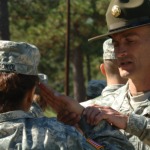Emergency Preparedness Vocabulary
We get used to using the jargon of preparedness, and sometimes forget that not everybody thinks about this stuff on a daily basis! Here is some basic emergency preparedness vocabulary you can share with your neighbors and co-workers, particularly if they are new to the concept or if their English language skills aren’t well developed.
Nobody likes to feel left out or stupid. We have found that offering the vocabulary words “as a refresher” is a good way to develop a new level of engagement and confidence. This approach works for everybody!
Incident
This is the official word for the emergency itself – whether it is a fire, an earthquake, aftermath of a hurricane, or a train wreck. An incident can be local, or it can be widespread. We often think of something that is “incidental” as being not very important. In the world of emergency response, an incident is the most important thing! The Incident Commander is the person who takes charge of the response. (Interestingly enough, the very first person who arrives at the scene may become the first Incident Commander, but when someone more qualified arrives, that person may take over!)
Search and Rescue
This is pretty straight forward. It refers to searching for, finding and helping people in immediate danger. Professionals often divide this up into specialty sub-fields that require special training and/or equipment, such as mountain rescue, swift water rescue, etc.
Search and rescue activities are stopped if it is clear there are no more living victims, or if the situation becomes too dangerous for the rescuers. Eventually, search and rescue changes over to “recovery.”
Cribbing
When rescuers are searching through collapsed structures, they may want to lift pieces of debris to reach people trapped beneath. To do this safely, they lift piece by piece and create a support structure to hold each layer safely before moving on to the next. The process is called “cribbing.” It usually involves using pry bars to lift debris, then building a support underneath using wooden beams laid across one another in the form of a box.
Triage (“tree-ahzh”)
In a real emergency, one of the hardest jobs for a volunteer is to not stop to help the first injured person they come to! Instead, they go through a process to sort injured people into groups based on their need for medical treatment. Triage is that sorting process. Its purpose is to serve the most people when resources are limited. Typically, injured people are briefly assessed and then labeled as “minor” (a minor injury), “immediate,” “delayed,” or “deceased.” A fully equipped CERT team will have colored labels (see illustration to left) to attach to victims; this helps trained first responders know where to go when they arrive.
CERT (“sirt”)
The Community Emergency Response Team concept was started in Los Angeles in the 1980s and is now in every state of the union. Professional First Responders had seen the role that committed, ordinary citizens can play in large-scale disasters, when resources are delayed or spread thin. So they created training to give citizens a way to act more safely and more effectively. CERT training usually consists of 20-24 hours of classroom study and hands-on practice. In an emergency, CERT graduates are able to act first as individuals and later as teams to assess damage, extinguish fires, perform light search and recue and render first aid. When professional First Responders arrive, CERT teams serve as support if required.
Logistics (“lo-jis-tiks”)
This is the science of getting supplies to where they are needed. In an emergency, it involves understanding the scope of the incident, knowing what tools, supplies or equipment are available and where they are stored, and making arrangements for getting things delivered to where they are needed. A volunteer totally unfamiliar with the neighborhood or business will not be able to manage this job.
In our neighborhood, we have special teams devoted to each of these special areas. The leaders of these teams call upon other volunteers and direct them, as required.
Action item: Consider printing out these definitions for all team members, and going over them out loud at a training meeting so everyone knows how they sound.
Virginia
Your Emergency Plan Guide Team
Like words? Here are a couple of other “vocabulary” lists for different situations!


